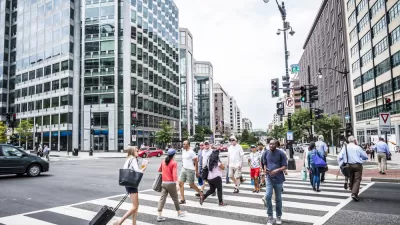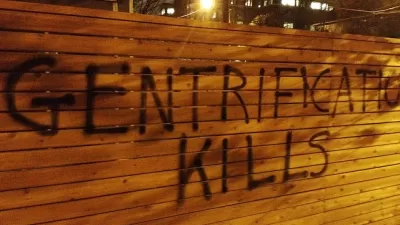A new study by the Federal Reserve Bank of Cleveland examines a “troubling consistency” of neighborhoods—that is that over the past 30 years, the poorest neighborhoods have stayed that way.
Emily Badger details a new study from the Federal Reserve Bank of Cleveland that identifies a trend of urban America: neighborhoods change very little over time with respect to the wealth or poverty of residents.
In summary: “Over the last 30 years, the poorest neighborhoods in urban America have largely remained that way. The depressing realities: Areas that had high unemployment and low average family incomes in 1980 are by and large the same places that had high unemployment and low average family incomes in 2008.”
The real value of the study, according to Badger’s analysis, are the examples provided by neighborhoods where residents did manage to raise their average incomes. “In thinking about how to change the fate of persistently poor neighborhoods, it's helpful to look more closely at what happened in the third of those neighborhoods that did see income growth over this time period.”
The finding of the study: “The areas that saw income growth, however, had significantly higher population density. And by 2008, their total population and density would grow even more.”
Badger acknowledges that “saying that poor neighborhoods in thriving cities fare better than poor neighborhoods in stagnant ones…seems fairly self-evident.” But an important implication emerges from that realization: “Your economic prospects as an individual are influenced by many factors outside of your control…”
The article also raises a final question, “the holy grail” of this direction of inquiry: “Within these previously poor neighborhoods, who is benefiting from the gains in income?”
FULL STORY: What we know about how poor neighborhoods become wealthier

Planetizen Federal Action Tracker
A weekly monitor of how Trump’s orders and actions are impacting planners and planning in America.

Map: Where Senate Republicans Want to Sell Your Public Lands
For public land advocates, the Senate Republicans’ proposal to sell millions of acres of public land in the West is “the biggest fight of their careers.”

Restaurant Patios Were a Pandemic Win — Why Were They so Hard to Keep?
Social distancing requirements and changes in travel patterns prompted cities to pilot new uses for street and sidewalk space. Then it got complicated.

Platform Pilsner: Vancouver Transit Agency Releases... a Beer?
TransLink will receive a portion of every sale of the four-pack.

Toronto Weighs Cheaper Transit, Parking Hikes for Major Events
Special event rates would take effect during large festivals, sports games and concerts to ‘discourage driving, manage congestion and free up space for transit.”

Berlin to Consider Car-Free Zone Larger Than Manhattan
The area bound by the 22-mile Ringbahn would still allow 12 uses of a private automobile per year per person, and several other exemptions.
Urban Design for Planners 1: Software Tools
This six-course series explores essential urban design concepts using open source software and equips planners with the tools they need to participate fully in the urban design process.
Planning for Universal Design
Learn the tools for implementing Universal Design in planning regulations.
Heyer Gruel & Associates PA
JM Goldson LLC
Custer County Colorado
City of Camden Redevelopment Agency
City of Astoria
Transportation Research & Education Center (TREC) at Portland State University
Camden Redevelopment Agency
City of Claremont
Municipality of Princeton (NJ)




























